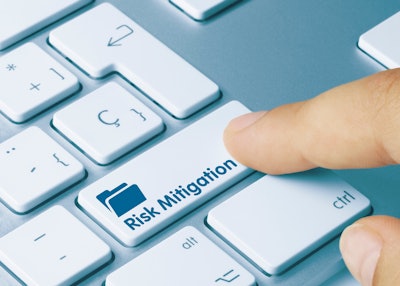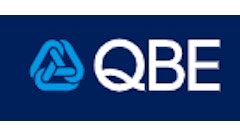
Construction is a risky business, as building executives know. According to data from the Bureau of Labor Statistics, construction firms topped the list of U.S. companies most likely to fail in the past decade.
However, for builders who are adept at managing risks, there are plenty of profit opportunities. Homeowners are sitting on a record $30 trillion of home equity, according to the Federal Reserve, which can be used to fund renovations and additions. The housing market continues to experience a near-record shortage of properties, and in the commercial space, Congress has approved $1.25 trillion of infrastructure spending over the next decade.
That has led some forecasters to predict construction will be one of the fastest-growing sectors in coming years – for companies who know how to manage the risks that come with building.
One way to mitigate risk is with insurance, but not all losses can be covered by mainstream policies, and coverage that the insurance industry considers “special” can be expensive. That’s why more construction companies are turning to 831(b) Plans, also know as captive, or microcaptive insurance, setting up subsidiaries to insure against losses. The practice of self-insuring, known as 831(b) for its section of the tax code, gives businesses more control over coverage and costs.
831(b) plans allow owners to set aside tax-deferred dollars to address unfunded liabilities and protect their company’s profitability. Coverage can be designed to include business interruption, supply-chain issues, trade embargoes, government policy changes, and other areas that most standard insurance won’t touch.
No matter how you approach potential setbacks, it is crucial to develop a comprehensive risk management plan encompassing conventional insurance as well as alternative strategies for risk mitigation. Here, we present the top five unfunded liabilities that present a significant danger to your business, but all of which can be addressed by funding an 831(b) Plan.
1. Subcontractor Default
Dealing with a defaulting subcontractor is not uncommon for general contractors. When a plumber or electrician is not up to par or doesn’t meet deadlines or goes out of business, it can be disastrous for a project, leading to scheduling delays and costly reworks that can impact your whole team. A subcontractor who fails to perform can result in budgetary setbacks when the general contractor becomes responsible for the failed work.
Pro Tip: Subcontractor bonds and subcontractor default insurance can also help to effectively protect your business.
2. Supply Chain Issues
Since the onset of the COVID pandemic, supply chain setbacks and shortages have impacted the construction industry. A recent PwC survey found that 64% of U.S. firms still have moderate or severe risk surrounding securing materials from suppliers. Difficulty securing needed materials and price escalations can impact project timelines, costs, and profit margins.
Pro Tip: Routinely monitor for changes in the global supply chain to gauge the risk of material price increases so you can add an escalation clause to your contracts.
3. Third Party Business Interruption from Manmade and Natural Disasters
Natural disasters such as floods, earthquakes, and hurricanes can cause destruction far reaching the site of the disaster itself. Humans also are capable of creating disasters. Take, for example, the devastating train derailment in East Palestine, Ohio, earlier this year which shut down not only business in the area but created delivery delays and resources shortages across the country. Companies without backup plans and insurance coverage faced monumental losses.
Pro Tip: 831(b) Plans have been especially beneficial with insurance carriers continuing to increase their premiums, deductibles, and adding exclusions, especially regarding manmade and natural disaster-related causes of third-party interruptions.
4. Brand Reputation
A single customer posting negative reviews online can result in serious brand reputation issues for businesses. Construction companies are particularly vulnerable to reputation problems, with one lawsuit resulting in $750,000 in damages to recover lost revenue. Not to mention the expense of hiring a PR Firm and loss of income should bad news leak to the press.
Pro Tip: Consider ongoing training for employees on customer best practices to help avert negative reviews.
5. Political Risk
Construction companies, just like many other industries, were hit hard by the government mandated shutdowns in 2020 – a business interruption that by and large was not covered by traditional insurance due to no qualifying triggering event. Those with government projects, are susceptible to shifts in public policy, including regulatory changes and climate-protection initiatives that can impact workers’ safety and affect the timeline and financing of a project. Additionally, firms with clients around the globe face additional risks, including civil unrest and terrorist acts.
Pro Tip: Read your traditional insurance exclusions carefully. Identify gaps and be prepared to mitigate them. Planning ahead can help you thrive while others scramble.
How Can Construction Professionals Mitigate Risk?
Once you’ve identified which risks create the most significant loss exposure, you’ll want to create a strategy to help manage those dangers. You’ll need to gauge the likelihood, frequency, and severity of the potential risks.
Tackle the most likely and highest-impact threats first. Then, look at the low probability and low-impact risks. When construction executives are preparing a potential response to identified risks, there are four options: accept it, avoid it, control it, or transfer it.
- Some risks are acceptable – view positive risks as the cost of working on a worthwhile project.
- Avoid other risks by altering the project scope or rejecting it entirely.
- In certain instances, you’ll want to control the risk by putting in place measures that will decrease the likelihood of a loss or lessen its impact on the company.
- Transfer risk to a third party, such as an insurance provider or self-insure with pre-tax funds through an 831(b) Plan.
Another strategy often deployed by successful construction professional is utilizing construction management software to help with workflow and inventory management. There are more than a dozen companies that offer applications that help construction pros track orders and deliveries, schedule subcontractors, and manage project finances. Some even offer prospecting tools to generate new business.
Recovering Your Losses
When facing business losses, there are a variety of strategies that contractors and business owners can implement to recover, including:
- Construction Insurance Standard construction insurance plans can safeguard your business in the case of unexpected accidents and other situations. Being underinsured or uninsured could pose serious problems when inevitable risk arises, so make sure your business has adequate coverage. General liability insurance typically covers injury, property damage, and defective work, while commercial auto insurance covers the vehicles you use to reach the work site and may also cover attached equipment such as bolted toolboxes and ladder racks.
- Utilize an 831(b) Plan Taking on unmanaged risk can affect your company’s bottom line and, ultimately, its chances of survival. Fortunately, the 831(b) tax code is in place to help businesses prepare for the many what-ifs. There is so much at stake, from big risks such as another COVID-19-like government shutdown or smaller risks like sub-contractor default. You and your business can be self-reliant with an 831(b) Plan, ensuring that you are using funds more efficiently and mitigating all your risks. SRA 831(b) Admin can administer your 831(b) Plan, providing you and your company with peace of mind and security.



















